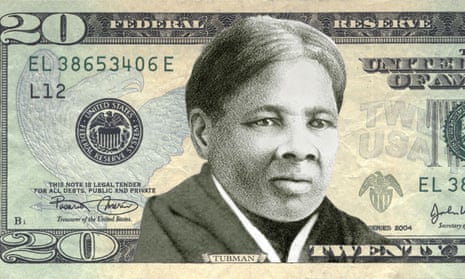Did you hear the one about the woman still being told to smile, over a hundred years after her death? As most of us celebrated the decision to put the inspiring Harriet Tubman on the $20 bill last week, some people just couldn’t handle the fact that she didn’t look quite as cheerful as they’d have liked. “They could make her smile a little can’t they?” wrote one person on Facebook. “I would be too discouraged to buy anything with this bill.”
It’s worth noting that Andrew Jackson, the bill’s current incumbent, is not exactly beaming in his picture either – but unsurprisingly nobody seems to have taken issue with his facial expression in the 88 years since he first appeared on the currency.
After escaping slavery, Tubman faced enormous challenges and prejudice throughout her life as she fought for the abolitionist cause and helped others to escape slavery via the Underground Railroad. But even after death, it seems, women are not safe from the kind of casual sexism that many of us contend with on a day-to-day basis.
In fact, Tubman wasn’t even the only woman subject to posthumous gender inequality last week alone. When Victoria Wood, writer, actress, director, comedic genius and five time Bafta winner, passed away at the age of 62, the Times published an obituary that mentioned either her weight, relationship with food, or appearance six times. It also stated that: “It was her relationship with her husband, the magician and television personality Geoffrey Durham (aka the Great Soprendo), that boosted her confidence and did much to help her further her career.” Her multiple awards were finally mentioned – in the penultimate paragraph.
It is true that Wood herself spoke about weight and dieting – at one point, she made a documentary about these issues, and the obituary quotes her own self-deprecating comments about her looks. But it was by no means a defining feature of her life and career, and certainly not to the extent required to justify such a focus on the topic within her obituary.
It is common, even in death, for women to be seen through the same media lens as in life: as a woman first, and a person second. Just look at Yvonne Brill, a rocket scientist and winner of the National Medal of Technology and Innovation, whose New York Times obituary began:
“She made a mean beef stroganoff, followed her husband from job to job and took eight years off from work to raise three children. “The world’s best mom,” her son Matthew said.”
Or consider this headline on an article about Margaret Thatcher published following her death in 2013: “Margaret Thatcher: a better politician than wife and mother.” There was even a section entitled: “In pictures: did family come second?” Can you imagine such a question being asked about a former male prime minister on the occasion of his death? Meanwhile when Colleen McCullough, Australia’s bestselling author, died last year, her obituary stated in its opening paragraph: “Plain of feature, and certainly overweight, she was, nevertheless, a woman of wit and warmth.”
Of course, women are only treated to these appallingly reductive overviews of their lifewhen they are lucky enough to be memorialised in the first place. Just 25% of the ‘notable deaths’ listed by the New York Times for 2015 were of women. And research has found that while women were the subjects of far fewer obituaries than men, they were also likely to have shorter obituaries, with the longest obituaries received by those women who happened to be the relative of a famous man.
Indeed, for many women, their relationship to a man overshadows their own identity and achievements, even in death. When well-known fashion designer L’Wren Scott died in 2014, for example, headlines about her passing included: “Mick Jagger’s girlfriend found dead”, “Mick Jagger’s girlfriend reportedly found dead in New York”, and even: “Rolling Stones cancel Perth concert.”
For those who will argue that this is merely a case of what is newsworthy, it is worth noting that the same rule holds true for ordinary women whose deaths are reported in the press because they happen to be tragic or premature. See, for example, headlines such as: “Drowned GP wife may have been trying to save her son”, (the ‘wife’ in question, Rosemary Wickstead, was a research scientist).
While these women are at least beyond the point of feeling the impact of such sexism, the rest of us are not. It’s true that obituaries usually memorialise older people, who might have lived during generations when women were less represented, especially in fields such as business or technology. But there are still plenty of impressive and successful women to spotlight, should we choose to do so. In fact, it could be argued that it is even more of a reason to make sure that we highlight women of note when they pass away – giving them the recognition they may have deserved but missed out on during their career.
Women face sexism, discrimination and bias at every stage of their lives. The very least we can do is give them a break from it when they die.

